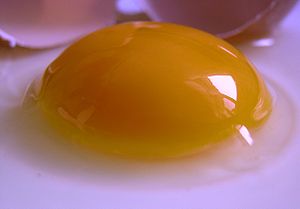Molecular
Gastronomy
The definiton of
molecular gastronomy is "the scientific discipline involving the study
of physical and chemical processes that occur in cooking." Basically, it
is trying to understand the processes which food undergoes as it is
being cooked. The observations from this science have lead to the
creation of astonishing new recipes, and the perfection of old wives
tales in the kitchen.
Molecular gastronomy began to take shape
in the early 90s. The pioneering chefs physicists chefs?
physicists were two men by the name of Nicholas Kurti and
Herve This. Kurti was a physics professor at Oxford who, at
a presentation, demonstrated how to create meringue in a vacuum
chamber, cooked sausage links by connecting them to a car
battery, and cooked a reverse Baked Alaska (hot on the
inside, cold on the outside) in a microwave oven. Herve This was
a man who refined recipes using his knowledge of physics and
chemistry, as well as created his own. An example of a recipe he
refined was the classic hard-boiled egg. A common convention is to
simply boil the egg for six minutes. However, molecular gastronomy
shows that cooking time is less important than the internal
temperature of the egg. This studied the egg further to create his
own recipes, such as these taken from http://khymos.org/recipe.php
Gibbs
"When an egg white is whipped with oil, a white emulsion is obtained. If
this emulsion is cooked in a microwave oven, water heats and expands.
At that time, the temperature is about 100°C, which is higher
than
the coagulation temperature of egg-white proteins. The emulsion is then

trapped into a gel. Of course, oil does not necessarily taste good, but
imagine infusing vanilla pods in egg white, dissolving sugar into the
mixture
and adding very good olive oil before microwave cooking. The
product is called a Gibbs, after the famous physicist Josiah Willard
Gibbs."
Vauquelin
"When an egg white is whipped, a small quantity of foam is formed: about
300 ml for one egg white.Why not more? As whipped egg white consists
primarily of water (around 90%), proteins and air, it is easy to
discover that adding water will produce more foam. If the foam is
cooked in a microwave oven, a chemically jellified foam is formed. To
achieve a better-tasting product, use orange juice or cranberry juice
instead of water, and add sugar to increase the viscosity and to
stabilize the foam before cooking. This new dish is named after Nicolas
Vauquelin (1763–1829), one of Lavoisier’s teachers."
Restaurants
have begun introducing molecular gastronomy into their menus as well,
primarily in the form of using liquid nitrogen to flash freeze certain
deserts, creating a cold crunchy shell while maintaining a softer
texture on the inside. A popular recipe among physicists is making ice
cream using liquid nitrogen as well.
Back to beginning
